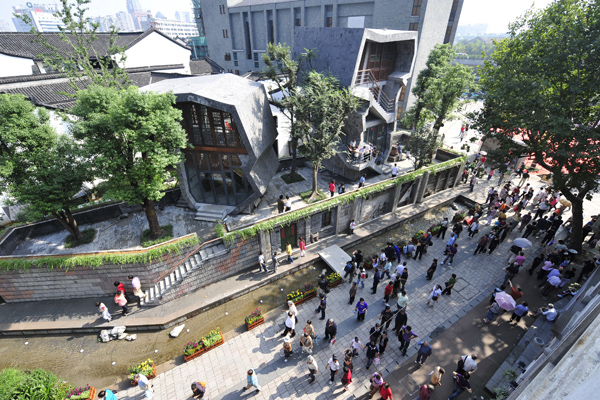 |
| The Nine Walls project in Hangzhou has been considered a good example of how public art can connect the past and present of a city.Li Zhong / For China Daily |
He said that a recent important trend in public art worldwide is to associate itself closely with the public's true needs. It's no longer a pure concept of fine arts that merely meets the tastes of a small elite, he said.
In China, public art is particularly a social issue more than a matter of aesthetics. "We don't lack money or creativity, although we need a sense of what public art means and more openness in the decision-making process," Yin said.
One criticism is that cities are producing extravagant yet identical works. Du Dakai, who heads the public art department under the China National Academy of Chinese Painting, said a main reason why many Chinese cities look so similar is due to a lack of respect for the distinct "ecology" of each one.
He said that this not only relates to a city's natural environment and geography, but also its history, fashion and customs, as well as the character of its people.
"Cities forge a distinct identity in this way, and this decides the direction they will take in terms of urban planning and development. Hence, public art should also adjust itself to a city's unique characteristics," he said.
"I believe an extraordinary work should be suited to one city specifically, sometimes even to certain characteristics of the city."
Visitors to a public art project entitled Nine Walls in Hangzhou, Zhejiang province, will find it a vivid example of how public art can connect the past and present of a city.
